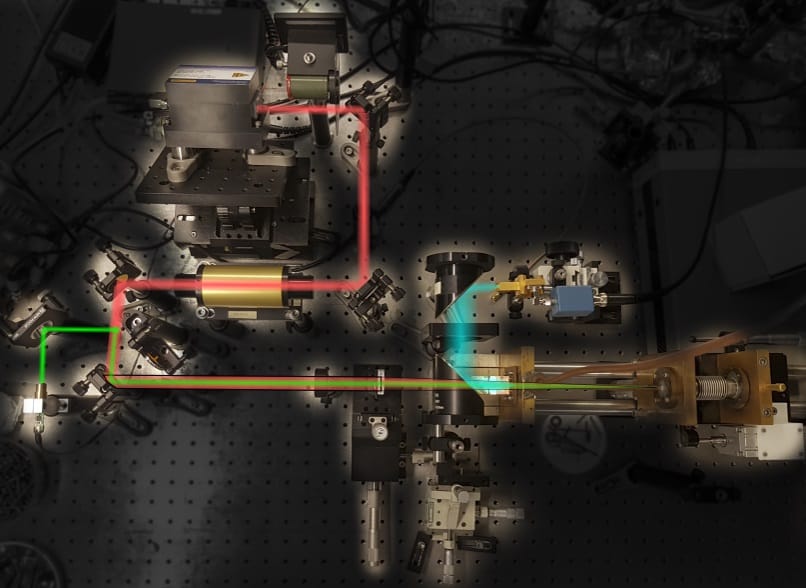Terahertz radiation drives compact ultrafast electron diffractometer
13 Sep 2021
The most compact ultrafast electron diffractometer to date has been built by physicists in Germany. The team, led by Dongfang Zhang and Franz Kärtner at the Center for Free-Electron Laser Science in Hamburg, created their instrument by compressing bunches of electrons to ultra-short durations, using millimetre-wavelength terahertz radiation. With further improvements, their approach could greatly improve accessibility to ultrafast physics for many different research institutions.
Ultrafast electron diffractometers are powerful tools for probing molecular dynamics, which unfold over femtosecond timescales. The technology involves generating compressed bunches of electrons, which are diffracted by a sample. Afterwards, the characteristic diffraction patterns produced can be picked up by a detector, providing researchers with a snapshot of the molecule’s structure. By repeating the process in rapid succession, physicists can then accurately measure temporal changes within the material.
In the latest electron diffractometer designs, radio frequency waves are used to generate the shortest and brightest bunches possible – which are crucial in ensuring the highest possible time resolution. Yet due to the long wavelengths of this radiation, the equipment involved is typically bulky and complex – limiting its accessibility for many researchers.
Terahertz manipulation
In their study, Zhang and Kärtner’s team instead turned to terahertz radiation to generate and manipulate electron bunches. Terahertz radiation is at higher frequencies that radio waves and has recently shown promise in providing compact, ultrafast electron sources that can generate short, high-energy electron bunches at high repetition rates. This allowed the researchers to design an electron diffractometer small enough to fit on a tabletop.
To test the capabilities of their new instrument, the team first heated a silicon crystal sample using a short laser pulse, then used bunches of around 10,000 electrons, compressed to durations of just 180 fs, to probe its expansion over the next picosecond. As they hoped, the subsequent electron diffraction patterns agreed with the well-known properties of silicon expansion.
Highly synchronized
Another benefit of the diffractometer is that uses a single laser to produce the terahertz radiation, heat the sample, and generate, manipulate and compress the electron bunches. This allowed the measurement process to be highly synchronized – delivering high temporal resolution at a repetition rate of 1 kHz.READ MORE

So far, the team’s experiments have studied samples as thick as 35 nm. Through further optimization, they hope that this could be increased to as much as 1 micron. If achieved, the technique could provide a highly desirable alternative to X-ray diffraction, which is often used to study ultrafast dynamics within thicker samples. Since electrons deposit far lower amounts of energy, they could be far better suited to investigating more delicate materials.
Ultimately, Zhang, Kärtner, and their colleagues hope that their innovations will make ultrafast electron diffractometers far more accessible to smaller labs, potentially opening up extensive new opportunities for research.
The instrument is described in Ultrafast Science.
FROM PHYSICSWORLD.COM 13/9/2021

Δεν υπάρχουν σχόλια:
Δημοσίευση σχολίου